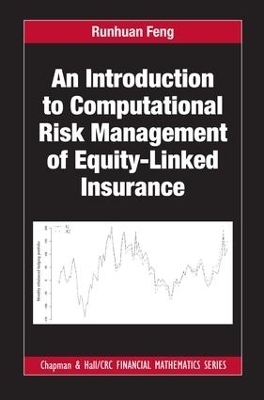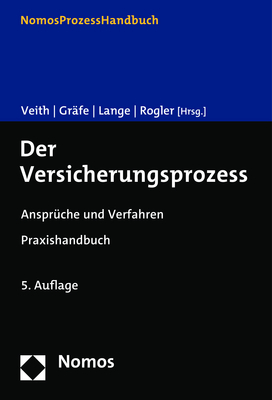
An Introduction to Computational Risk Management of Equity-Linked Insurance
Crc Press Inc (Verlag)
978-1-4987-4216-0 (ISBN)
Today's computational power and technology make it possible for the life insurance industry to develop highly sophisticated models, which were impossible just a decade ago. Nonetheless, as more industrial practices and regulations move towards dependence on stochastic models, the demand for computational power continues to grow. While the industry continues to rely heavily on hardware innovations, trying to make brute force methods faster and more palatable, we are approaching a crossroads about how to proceed. An Introduction to Computational Risk Management of Equity-Linked Insurance provides a resource for students and entry-level professionals to understand the fundamentals of industrial modeling practice, but also to give a glimpse of software methodologies for modeling and computational efficiency.
Features
Provides a comprehensive and self-contained introduction to quantitative risk management of equity-linked insurance with exercises and programming samples
Includes a collection of mathematical formulations of risk management problems presenting opportunities and challenges to applied mathematicians
Summarizes state-of-arts computational techniques for risk management professionals
Bridges the gap between the latest developments in finance and actuarial literature and the practice of risk management for investment-combined life insurance
Gives a comprehensive review of both Monte Carlo simulation methods and non-simulation numerical methods
Runhuan Feng is an Associate Professor of Mathematics and the Director of Actuarial Science at the University of Illinois at Urbana-Champaign. He is a Fellow of the Society of Actuaries and a Chartered Enterprise Risk Analyst. He is a Helen Corley Petit Professorial Scholar and the State Farm Companies Foundation Scholar in Actuarial Science. Runhuan received a Ph.D. degree in Actuarial Science from the University of Waterloo, Canada. Prior to joining Illinois, he held a tenure-track position at the University of Wisconsin-Milwaukee, where he was named a Research Fellow.
Runhuan received numerous grants and research contracts from the Actuarial Foundation and the Society of Actuaries in the past. He has published a series of papers on top-tier actuarial and applied probability journals on stochastic analytic approaches in risk theory and quantitative risk management of equity-linked insurance. Over the recent years, he has dedicated his efforts to developing computational methods for managing market innovations in areas of investment combined insurance and retirement planning.
Runhuan Feng is an Associate Professor of Mathematics and the Director of Actuarial Science at the University of Illinois at Urbana-Champaign. He is a Fellow of the Society of Actuaries and a Chartered Enterprise Risk Analyst. He is a Helen Corley Petit Professorial Scholar and the State Farm Companies Foundation Scholar in Actuarial Science. Runhuan received a Ph.D. degree in Actuarial Science from the University of Waterloo, Canada. Prior to joining Illinois, he held a tenure-track position at the University of Wisconsin-Milwaukee, where he was named a Research Fellow. Runhuan received numerous grants and research contracts from the Actuarial Foundation and the Society of Actuaries in the past. He has published a series of papers on top-tier actuarial and applied probability journals on stochastic analytic approaches in risk theory and quantitative risk management of equity-linked insurance. Over the recent years, he has dedicated his efforts to developing computational methods for managing market innovations in areas of investment combined insurance and retirement planning.
• A comprehensive and self-contained introduction to quantitative risk management of equity-linked insurance
• A collection of mathematical formulations of risk management problems presenting opportunities and challenges to applied mathematicians
• A handbook summarizing state-of-art computational techniques for risk management professionals
• Bridges a gap between latest development in finance and actuarial literature and the practice of risk management for investment-combined life insurance
•A comprehensive review of both Monte Carlo simulation methods and non-simulation numerical methods
| Erscheinungsdatum | 11.07.2018 |
|---|---|
| Reihe/Serie | Chapman and Hall/CRC Financial Mathematics Series |
| Zusatzinfo | 30 Illustrations, black and white |
| Verlagsort | Bosa Roca |
| Sprache | englisch |
| Maße | 156 x 234 mm |
| Gewicht | 771 g |
| Themenwelt | Mathematik / Informatik ► Mathematik ► Angewandte Mathematik |
| Betriebswirtschaft / Management ► Spezielle Betriebswirtschaftslehre ► Versicherungsbetriebslehre | |
| Wirtschaft ► Volkswirtschaftslehre ► Ökonometrie | |
| ISBN-10 | 1-4987-4216-5 / 1498742165 |
| ISBN-13 | 978-1-4987-4216-0 / 9781498742160 |
| Zustand | Neuware |
| Informationen gemäß Produktsicherheitsverordnung (GPSR) | |
| Haben Sie eine Frage zum Produkt? |
aus dem Bereich


